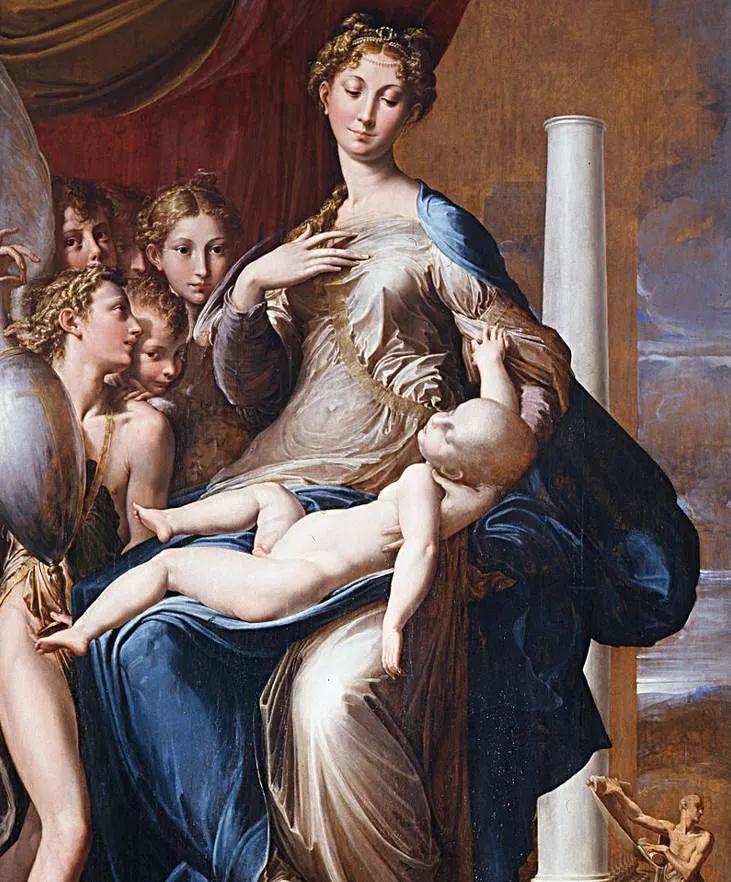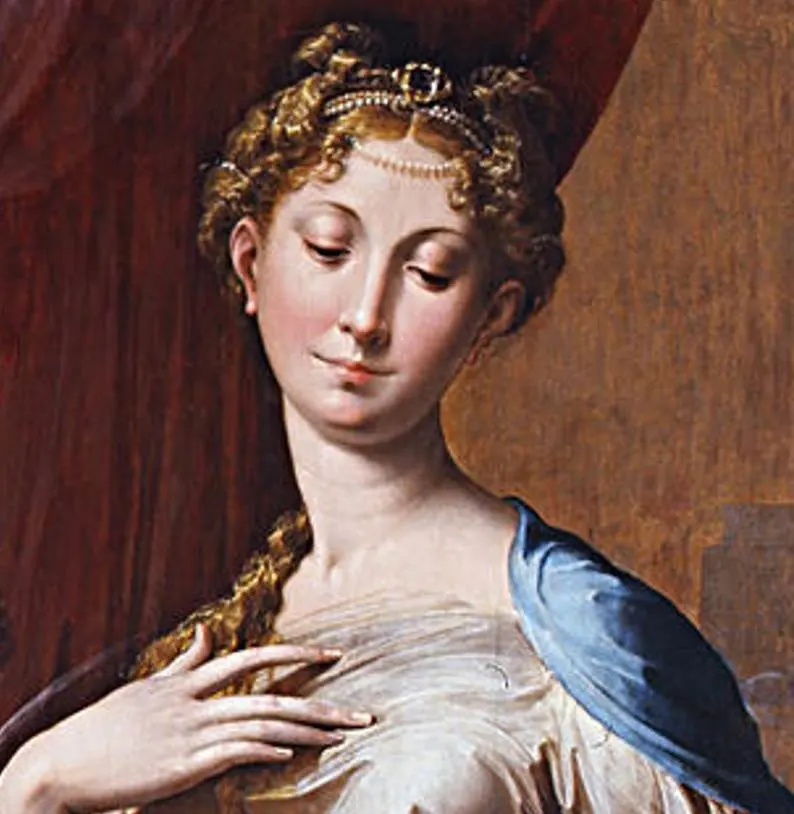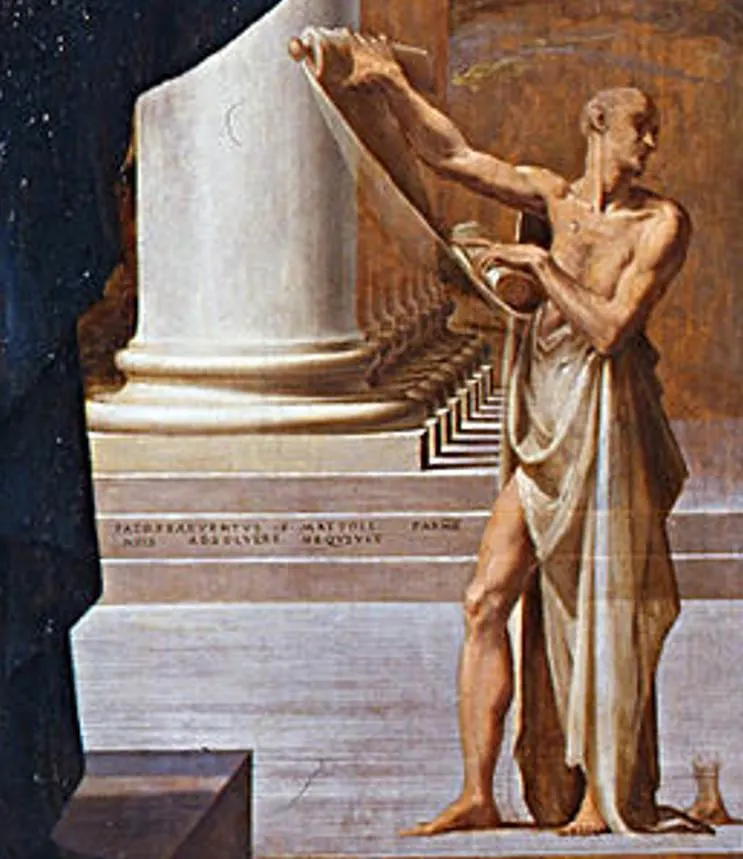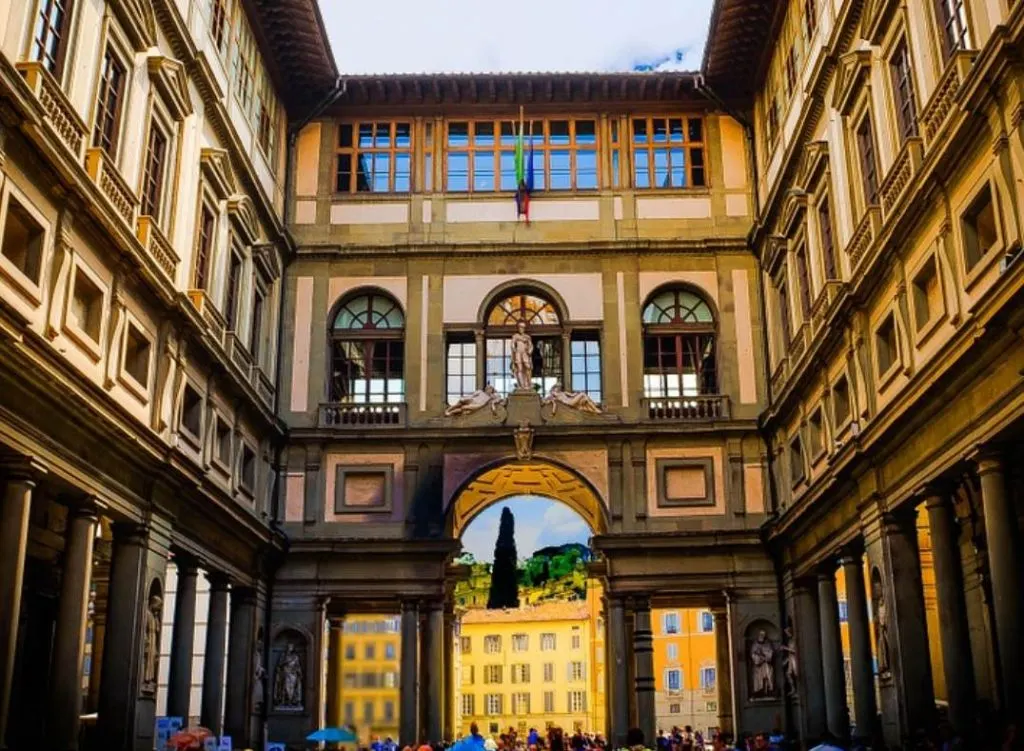If there’s one painting that defines the art movement that emerged in the 16th century following the Renaissance, then this is the one.
Mannerist artists exaggerated the harmonious ideals of the Renaissance artists, often resulting in asymmetrical compositions or figures.
Let’s take a closer look at some of the most interesting facts about Madonna with the Long Neck by Parmigianino, a Mannerist painting that fits this description perfectly.
1. The painting was left incomplete upon the artist’s death in 1540
Parmigianino (1503-1540) is the common name of an artist that was named Girolamo Francesco Maria Mazzola. His nickname is a reference to both his size and his native city as it translates to “The Little one from Parma.”
Although the Italian artist was active in his native Parma, he also produced amazing paintings in other Italian cities such as Florence, Rome, and Bologna.
He was born when the High Renaissance emerged and is considered to be one of the first artists whose entire career fell into the Mannerist period, an era also known as the Late Renaissance.
This art movement started in 1520 and lasted the entire 16th century before being completely replaced by the Baroque movement.

2. It was commissioned to decorate a funerary chapel in Parma
He received the commission for Madonna with the Long Neck around 1534 and started working on it that same year.
It was commissioned by Elena Baiardi Tagliaferri to decorate the tomb of her husband, Francesco Tagliaferri. This funerary chapel was located in the church of Santa Maria dei Servi in Parma.

Francesco was a friend of the artist so he didn’t have a lot of pressure to complete the work. When the artist passed away in 1540, it was still left incomplete in his studio.

3. It’s considered to be the epitome of the Mannerist art movement
Parmigianino studied in Rome where he was able to admire the works of Michelangelo and Raphael, two leading figures of the High Renaissance.
Despite being heavily influenced by these Renaissance masters, he developed his eccentric style that revolved around exaggerated elements. He became the leading artist of Emilian Mannerism, a reference to the Emilia-Romagna region in which Parma is located.
In this particular work, the exaggerated features are the elongated figure of the Virgin Mary reflected by her long neck and larger-than-life body. The Baby Jesus on her lap is also much bigger than a normal baby.

4. Parmigianino added a small statue of St. Jerome in the bottom right corner
The artist painted the Virgin in such a way to make her appear more gracious. She sits on a huge pedestal and wears luxurious clothes.
This is a scene of the adoration of the Virgin Mary and the statue of Saint Jerome in the bottom right corner is a reference to this.
He is depicted with his scroll, a reference to the fact that he was the one who translated the Bible. He is also often associated with the adoration of Mary, a common subject in religious art.

5. There are six angels cramped into the left side of the scene
Because Parmigianino painted the Virgin so big, she takes up the entire composition. This made it hard for the artist to add any more figures, resulting in the 6 adoring angels being squeezed into the left side of the painting.
One of the angels at the bottom is barely noticeable. This is one of the elements in the painting that remained unfinished when the painter passed away.
It was initially assumed that this angle looked at the Virgin Mary but a recent restoration has uncovered that this figure is looking at the vase held by the angel to its left.

6. It was purchased by the Grand Prince of Tuscany in the late 17th century
The painting never left Italy and entered the extensive collection of fine artworks of the Medici family in the late 17th century.
It was purchased by Ferdinando de Medici, Grand Prince of Tuscany (1663-1713), in the year 1798. He was very enthusiastic about acquiring this remarkable work of art as he mentioned that it was:
Drawn as if by Raphael, finished with the soul but without pain, and marvelously colored.

7. How big is Madonna with the Long Neck by Parmigianino?
The painting is relatively big, something that accentuates the elongated figure of the Virgin Mary even more.
This oil on wood painting has dimensions of 216 × 132 centimeters (85 × 52 inches).
8. Where is the painting located today?
When a painting was purchased by a member of the powerful Medici family, then there is only one place that it would end up.
Yes, Madonna with the Long Neck by Parmigianino is part of the collection of the Uffizi Gallery, the most popular museum in Florence.
This means that it’s part of one of the most incredible collections of Renaissance, Mannerist, and Baroque paintings in the world.

